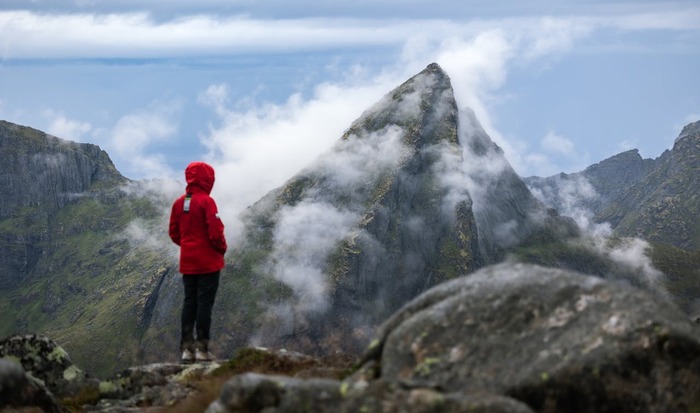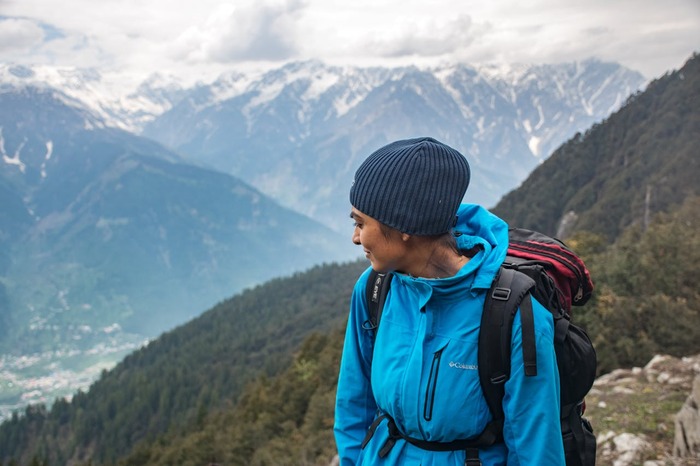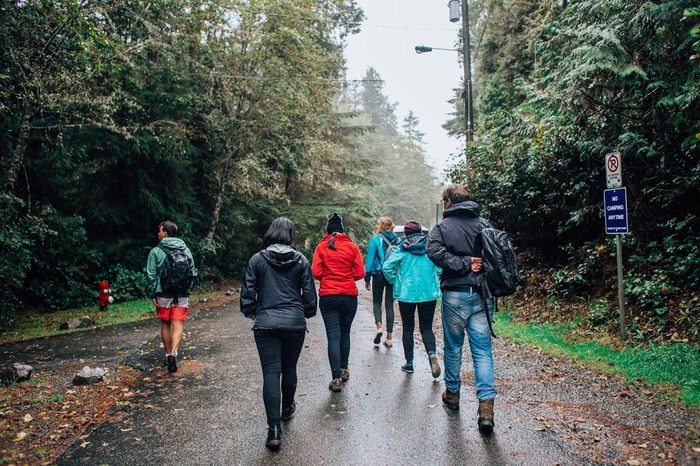
Spring invites us to the trails with fresh air and blooming landscapes — but it also brings some of the most unpredictable weather of the year. One moment you’re cycling under blue skies, and the next, dark clouds gather and the temperature drops. These fast changes are typical in spring, a season when warm and cold air often clash, triggering sudden showers, wind gusts, or even storms.
In the mountains, the weather is even more volatile. At any time of year — including summer — a sunny morning can turn into a cold, rainy afternoon in no time. Convection storms are common, and the higher you go, the faster conditions can shift. If you’re planning a multi-day hike or cycling trip in mountainous terrain, staying dry and warm isn’t just about comfort, it’s about safety.
Whether you’re setting out for a day hike or a longer mountain trek, preparation is important. Here’s how to protect yourself from rain and sudden drops in temperature so you can focus on enjoying the adventure.
Layering: The key to staying warm
Dressing in layers is the best strategy for unpredictable weather. Instead of relying on one thick jacket, layering allows you to adjust your clothing throughout the day as the conditions shift. It’s a flexible and efficient way to stay warm on the trail. Here’s a quick breakdown of how the three-layer system works:
Base Layer
Worn against your skin, it keeps you dry by wicking away sweat. Merino wool or technical synthetic shirts work best. Avoid cotton — it holds moisture and chills you quickly.
Middle Layer
This is your insulation. A fleece or lightweight insulated jacket (synthetic or down) traps body heat and keeps you warm when it gets colder.
Outer Layer
The protective shell. It shields you from wind and rain — more on how to choose the right one below.
Also pack essentials like a hat, light gloves, and an extra pair of dry socks. Small items, big comfort, especially when the weather changes.

Rain Protection: What works best and when?
Rainy weather is a real risk in spring and the mountains. Getting wet can quickly lead to feeling cold, especially if it’s windy or if you’re already tired. Here are the most common types of rain protection and when to use them:
Waterproof jacket
A high-quality waterproof jacket is breathable and allows sweat to escape while keeping rain out. It’s a solid all-rounder for outdoor adventures, perfect for active movement like hiking or cycling, especially in light to moderate rain. Choose a model with good ventilation if you’ll be active — otherwise, you might get soaked from sweat instead of rain.
Poncho
Ponchos provide wide coverage and ventilation, it’s a good choice for casual hikes and when you want to keep your backpack dry too. Ponchos are easy to throw on quickly during sudden downpours and often cover both you and your backpack. However, they can be awkward in strong wind and are less suited for high-speed cycling or scrambling over rocks.
Rain coat
A rain coat offers full coverage and more insulation than a lightweight jacket. It’s a good option for long days outside when staying warm is just as important as staying dry, perfect choice for prolonged or heavy rain, especially in cooler weather or slower-paced hikes. Keep in mind that longer coats can restrict movement slightly, so they’re better for hiking than for biking.

Outdoor adventures are more fun when you’re prepared. By dressing in layers and packing the right kind of rain protection for your activity, you’ll stay comfortable even when the weather isn’t. A bit of planning can turn a cold, rainy hike into a cozy, memorable one.


